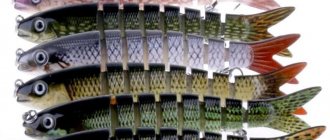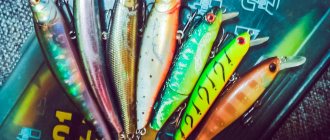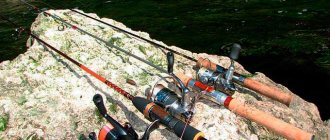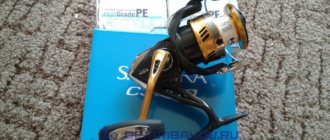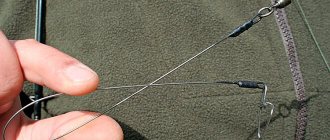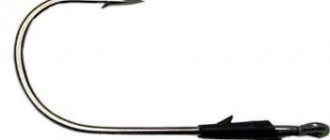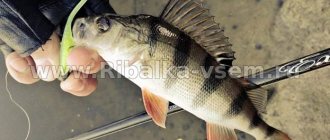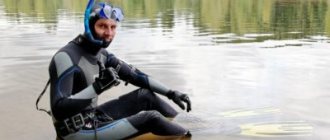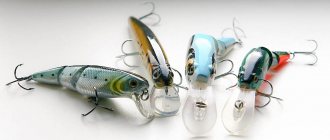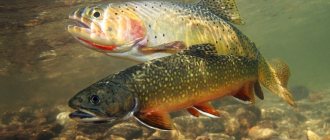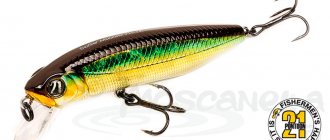Origin story
Fishermen are remarkably persistent when it comes to finding ways to increase their catch and improve their techniques. One of these dedicated researchers was James Haddon and Lauri Rapala. At the end of the 19th century, J. Haddon used and then patented a wooden bait for predatory fish. L. Rapala was the first to come up with a blade for deepening the wooden prototype of a modern wobbler, and then became the creator of the now thriving production of fishing gear.
Today, “fish” of all types are widely used in various bodies of water as equipment for interesting and effective predator fishing. The existing classification of wobblers and the diversity of each class allows the most inquisitive angler to choose the right specimen.
Structural features
Structurally, tackle in the form of a fish or insect consists of a body (solid or composite), hooks, an eye for securing the fishing line, a weight, and a blade for adjusting the immersion (may be missing). The most practical and widely used is the plastic version. Characterized by a variety of designs in shape and color.
The inside of the body is equipped with a metal wire axis, which serves as an auxiliary function for attaching hooks and eyes for fishing line. There may be balls inside that give a certain sound. Many models have a blade made of solid casting relative to the body. The presence or absence of a “blade” completely determines the behavior of the wobbler.
To simplify navigation in a wide variety of artificial “fish”, a clear classification of wobblers is used.
Such different shapes
Features of appearance and filling affect buoyancy, noise, depth, play during retrieve, as well as selection depending on the taste preferences of the predator.
There is a classification of wobblers depending on the presence and type of blade. It is this that most often determines the behavior and depth of the bait.
- Bladed: minnows, fats, shads, cranks.
- Bladeless: poppers, walkers, rattlins, jerkbaits, stickbaits, darters.
The play of wobblers with “blades” is determined by their width, length and directional angle. A wide one promotes a larger range of removal of the tackle to the side during wiring, a narrow one – linear movement; long, and also having a small angle of inclination, characterizes greater immersion, in contrast to short or having a large inclination.
The presence or absence of balls inside, as well as their number, determine the noise of the gear, which attracts some fish. The mechanism of shifting the center of gravity with the help of balls affects the behavioral characteristics of the wobbler in the water column.
The body is made one-piece or composite. The latter option has a more pronounced game with a calm retrieve, simulating the movement of live fish (swimmbaits).
Visually they imitate a live fish. Thus, the “minnow” class has a narrow, elongated shape, characteristic of a gudgeon. The shad is identified with roaches or fry of cyprinids, and the cicada with insects or small frogs.
Each individual specimen has its own specifics regarding buoyancy, depth, playing features, weight and size. However, the presence of common characteristics allows them to be distributed among species groups. Beginning fishermen often have difficulties with the question of how to choose a wobbler. The classification of wobblers simplifies the understanding of the connections between their appearance and play, the principles of use depending on fishing conditions and types of fish.
The main characteristics of wobblers - how to choose based on them?
Wobbler buoyancy
This indicator indicates how the wobbler behaves when it gets into the water. One of the key indicators, since, based on it, it is determined whether the wobbler can be used in certain conditions. For example, floating baits are used in shallow water, and sinking baits are used in deep water. Based on this, three categories can be distinguished:
- Floating
After hitting the water, the wobbler remains on the surface, and when retrieving during pauses, it floats up. Mainly used in shallow water or contaminated areas. They easily overcome obstacles, so they are most effective in such a situation. Plastic is mainly used for production; wood or foam is less common. They are divided into fast-floating (FF), floating (F) and slow-floating (SF). From the name it is clear what their difference is. The choice depends on the activity of the fish. If the fish is inactive, take slow-rising wobblers; if active, take fast-rising ones.
- Suspending
This is a wobbler with neutral buoyancy. They “hang” at the depth stated by the manufacturer. This happens thanks to the air chamber inside the bait, which is filled with weights. They constantly flash in front of the fish and are in its field of vision, thereby attracting it. Best suited for catching pike and pike perch.
- Sinking
Most often used for fishing in deep water or with little vegetation. They are attractive to predators because they imitate dying fish, sinking to the bottom, as they are quite heavy in weight. It is most convenient to use in clean reservoirs, they are also suitable for fast currents, and can be easily cast over long distances. They are divided into slow-sinking (SS), sinking (S) and fast-sinking (FS). If the fish is active, then you should also opt for fast-sinking ones; if not, then slow-sinking models are suitable.
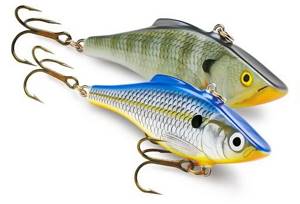
Wobbler length
One of the indicators that affects the performance of a wobbler. Long wobblers have a more sweeping action, while short ones have the opposite effect. There is another dependence: for larger fish they choose a longer wobbler, for small ones, respectively, vice versa.
Wobbler weight
The choice of wobbler weight directly depends on the test of your spinning rod. When making a choice in favor of one or another bait, it is worth assessing whether your rod will allow you to fish with it.
Object of fishing
On our website you can easily apply a filter depending on the object of your fishing. This way you can choose the optimal wobbler for both perch and pike. Also, many manufacturers initially indicate for what fishing a particular wobbler is needed, which greatly simplifies the search for the right bait. For example
- for pike
- for perch
- for zander
- for asp
- for chub
- for trout
- in ide
Wobbler deepening
This factor indicates the depth to which the bait can sink and directly depends on the body of water in which fishing is planned. If you are fishing in a place with shallow depth or in a polluted area, then you should choose a wobbler with a small depth, usually up to 30 cm. If you are fishing in a deep and clean reservoir, then the depth should be large. Surface baits attract fish exclusively at the level of the water table. Usually do not have a shoulder blade. They attract fishermen because they can see the fish attacking the bait. There is also a distinction between deep and medium depth.
Wobbler wiring type
- Uniform wiring is quite catchy. Its advantage is that many predatory fish have this hunting style, so other baits can scare them away. Well used in warm water and strong currents.
- Twitching and jerking are based on horizontal movements of the rod. Most often, minnow wobblers are used in these styles. The game with a wobbler takes place on one level. The most popular type of wiring for all types of wobblers.
- Trolling is a technique that is used only from a boat. In simple terms, the boat moves and pulls the bait along with it - this is the method. Best used on large, deep bodies of water.
- Stop & Go (stop&go) is a technique that consists of intermittent wiring of a wobbler. Cranks, minnows and shads are used. A depth of 1 meter and below is required. Often, for greater efficiency, they are combined with twitching.
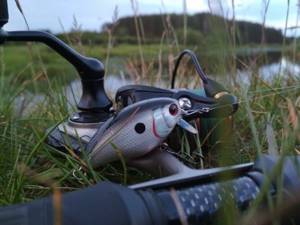
- Long casting system
This function is used when fishing from the shore in order to reach a distant point so as not to spook the fish. To do this, the center of gravity is shifted to the tail section and a magnetic system is often used. Minnows are mainly used. Wobblers with a small blade are also suitable. When using wobblers with a magnetic system, the bait in the air does not twist with the cord.
- Noise chamber
A small space is created inside the wobbler into which the balls are placed. This is designed to provide additional sounds that will attract fish.
Wobbler color
When choosing, it is necessary to take into account lighting, climate, water transparency and many other environmental factors. In clear weather, it is best to use bait in light or acidic colors that will match the colors around you. In dark or cloudy weather, it is better to use inconspicuous baits of natural colors. For example, when fishing at great depths, wobblers of natural colors are used.
Features of ascent and dive
Buoyancy is a characteristic of the behavior of the bait when casting and during retrieving. Its indicators inform about how the “fish” will behave: move near the surface, at medium depth or near the bottom.
There is the following classification of wobblers by buoyancy:
- Sinking (S) sink to the bottom, but float up a little in the water column as the thread moves. Used for fishing in deep reservoirs, as well as for studying the bottom, the stocking of a reservoir, allowing long casts.
- Pop-up, or floating (Floating, F) - when casting, they stop at a shallow depth, but with the slightest movement, the reels float up and move in the upper layer of water. They attract a predator that walks close to the surface. Allows you to fish a body of water with abundant vegetation and snags.
- Wobblers with average performance (Suspending, SP) do their “work” in the water column. Most versatile in use.
The classification of wobblers by buoyancy also provides for the distribution of sinking and floating ones into subcategories:
- very slow floating (Super Slow Floating, SSF), slow floating (Slow Floating, SF), fast floating (Fast Floating, FF), very fast floating (Super Fast Floating, SFF);
- very slowly sinking (Super Slow Sinking, SSS), slowly sinking (Slow Sinking, SS), quickly sinking (Fast Sinking, FS), very quickly sinking (Super Fast Sinking, SFS).
The categories SSF, SF, as well as SSS, SS are transitional, which in some situations can also be classified as “suspending”.
Each specimen has its own individual characteristics and common group characteristics.
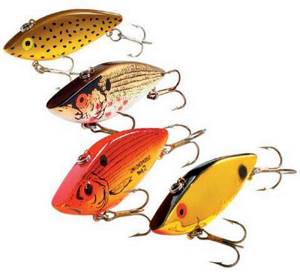
Fishing technique
Spinning fishing is common among passionate fishermen who prefer to actively fish. Fishermen must move quickly across the pond, tempting prey with well-chosen baits and fishing techniques that can correctly present their trophy to predators. There are many wiring techniques, but we will look at the most popular and effective ones.
Uniform
- a simple technique that does not require you to have experience in spin fishing. When casting a wobbler to depth, you should let the bait sink to the bottom, then start turning the reel at the same pace without jerking.
Classic stepped
– when performing this technique, the jump or step method is used. After the fish has dropped to a certain depth, you should turn the reel handle 2-3 times, take a short pause, and then repeat again. Thus, the bait will rise sharply up and fall again.
Snatch step
- a similar fishing technique, only now sharp jerks with the tip of the rod are used. When the fish has sunk to the bottom, it is worth making a sharp upward movement again. After a short break of a few minutes, repeat the jerk again. Continue this way until the desired result.
Immersion depth characteristics
The classification of wobblers by depth involves their distribution into groups, depending on the distance from the surface of the water at which the “fish” is located during wiring. A very important criterion, because catching a deep-sea predator hiding in snags using a surface bait capable of diving no more than half a meter will be initially ineffective.
In the marking of the gear, a letter code indicates the degree of immersion. Shallow water ones include those capable of diving to 0.5-1 m, and whose designation contains the letters SSR (Super Shallow Runner) or SR (Shallow Runner).
Wobblers with average penetration rates are encrypted MR (Medium Runner) and are capable of diving to a depth of 1.5 m.
“Fish”, which during wiring descend to a depth of 2 m, are represented by deep-sea wobblers. Their classification and marking also depends on the diving capabilities: DR (Deep Runner) - 2.5 m, MDR (Medium Deep Runner) - 3 m, SDR (Super Deep Runner) - up to 12 m. In this case, specimens marked DR and MDR often referred to as "suspending".
Thus, the most important characteristic information is the distribution by depth and classification of wobblers by buoyancy. The marking on the packaging combines them into a letter code, where both parameters are indicated with a hyphen.
Example:
- SR-F, where SR - Shallow Runner - designation of a small recess; Usually the possible depths (0.6-0.8 m) are specified nearby.
- F - Flowting - floating.
Wobbler deepening
Each bait has its own working depth (or horizon) of wiring, which is indicated on the packaging. There are surface, shallow, deep and something in between, located in the range between deep and shallow with a depth of 2-3 meters.
Let's start with the superficial. The depth of such baits is zero, the wiring is at the border of air and water. The most striking example is a variety called popper. Fishing takes place in front of the fisherman, all attacks of the fish are clearly visible, which makes fishing very exciting and unforgettable. With each bite, the heart skips a beat and is accompanied by a frantic surge of adrenaline. Posting a popper is an alternation of jerks and pauses with accompanying “plops” of the popper. This is quite noisy fishing, which our perch simply loves.
You can also fish with surface baits using a uniform retrieve. For example, all kinds of imitations of mice and, in some cases, frogs with zero depth. They are good in shallow water overgrown with water lilies and near steep cliffs, from which careless living counterparts sometimes fall.
Shallow-water ones, with a depth of up to a meter, are used naturally in shallow water, in the coastal (coastal) zone, as well as when catching predators in cauldrons (active hunting areas). In other cases, fishing with shallow-water baits will most likely be the exception to the rule.
In this group you can most often find suspenders, as they are the most popular among fishermen. The fish stands quite densely in the coastal strip or on the border of algae and only a long pause in the retrieve without sudden movements can force it to bite.
Next we will consider baits with a depth of 2 meters or more. Visually, deep-sea wobblers differ from others by the large blade that is located in the front part. They have a lot of drag and almost all have their own active game. For them, you need to choose a spinning rod with an increased test load range.
The main wiring is the usual uniform one; you can diversify the game with rare jerks (twitching) or temporary stops in the wiring, after which fish bites very often occur.
I will also mention that when fishing from a boat in the lane (or trolling), the bait moves a little deeper than indicated on the box, and when fishing from the shore, the depth of immersion may vary depending on the following factors:
- wiring speed;
- spinning position;
- presence of current.
That is, if the box says immersion depth is 2 meters, focus on the extended range of use - approximately 1.5-2.5 meters. Everything is extremely simple with floating models: the slower you turn the reel handle, the higher the bait goes, and the higher the tip of the spinning rod, the higher the bait goes. With sinking baits it’s a little different. If the position of the spinning rod has the same effect, then with the speed of the retrieve it’s the opposite - the faster you turn the handle, the higher the wobbler will go.
The speed of the current also greatly affects the depth of the dive. With the current - a floating wobbler will float higher, against - it will dive deeper.
Classification of baits by weight and size
Parametric characteristics are also important. Size and weight partially affect buoyancy and dive depth. However, the main reason for preferring one size or another is the type of “prey” desired.
So, to catch fish that have a mixed diet, which includes whitebait, small specimens are used (up to 6 cm and weighing up to 5 g). For a small predator, use a small or medium (7-10 cm, 6-10 g) wobbler. The choice is determined by the preferences of the fisherman, fishing conditions and characteristics of the fish. For larger “prey”, large (11-15 cm, 11-20 g) and especially large (more than 15 cm and 20 g) are used, taking into account the ratio of 1:10 (the bait should weigh approximately 1/10 of the body weight of the desired predator, especially when it comes to pike).
The parameters of the artificial “fish” are indicated on the packaging next to the markings of its buoyancy and depth of depth.
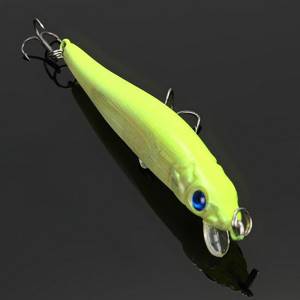
Behavioral characteristics of baits
The type of wiring performed greatly influences the behavior that the wobblers exhibit. Types and classification in this perspective are determined by the possible frequency of vibrations. We can highlight:
- high-frequency with active fast play;
- normal;
- low frequency passive.
In addition to the oscillation frequency, the characteristic of their amplitude is indicative. Wobblers that can deviate short distances from the main vector of movement are classified as narrow-playing. Those that have the ability to move in a zigzag or wave manner, significantly deviating from the main direction, are called wide-players. Neutral indicators demonstrate normal baits.
The choice determines the preferences of the fish in general, in a specific period, under certain conditions. It is known that perch and pike perch prefer high-frequency, narrowly playing prey, while pike are attracted to low-frequency, broadly playing, and sometimes even passive, “fish.”
Popper bait type
Popper is a surface bait that is available in a wide variety. If the product is mounted on a spinning rod, then it is better to purchase those parts whose weight does not exceed 5-15 grams. Moreover, it is important to pay special attention to the wiring, which should be carried out jerkily so that a special gurgle occurs that attracts fish. The presented bait works well in the shallows. You can use it to catch chub or asp.
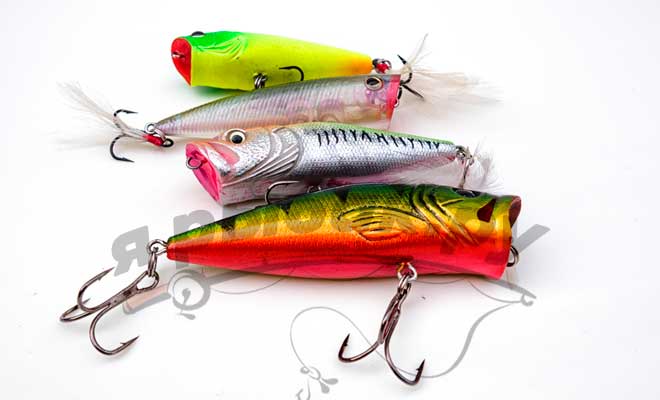
Poppers for fishing
The main characteristics of the product are that it resembles the behavior of a fish caught in a net.
In the case when a fisherman is purposefully hunting for pike, models such as the Firstma Bubble Pop 88 HA1, as well as the Ama-Fish Bubble Pop 88, are suitable for him. Often, perch or chub were excellently caught on them. True, it is advisable to choose smaller bait for the presented species so that it does not scare them away.
Minnow
The first wobbler, invented by L. Rapala in 1936, was a minnow. This type is very popular among anglers. The reason for this is their functionality and diversity.
Structurally, they are an elongated “fish” imitating a fry, small in width, shaped like a circle when cut, and most often equipped with two tees. The shape of the blade, weight and dimensions determine its buoyancy. In order to catch perch, you need to use a small minnow up to 10 cm. For pike, large wobblers, 10 to 14 cm long, are suitable.
The main types of postings used are twitching and “Stop and Go”. During “research” fishing, sinking minnows are used. There are swimmers who demonstrate their own interesting game even when the thread is calmly maintained. These are useful to use in clean water in sunny weather on a predator walking near the surface.
The bulk of the baits in this group are “suspending” baits, equipped with a small “blade” at an angle of 45˚, having average buoyancy and not demonstrating individual movement. The depth of minnow wobblers is up to 2.5-3 m. An interesting feature is the ability of those equipped with balls inside to lure deep-sea fish.
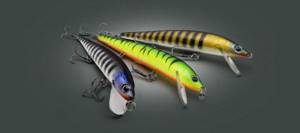
Wobblers Crank (cranks)
Some anglers call Crank class wobblers “baits for dummies.” The reason for such an offensive popular nickname is that they do not require any additional animation with the bait when retrieving.
They all have their own game, which, when retrieved, is transmitted to the tip of the rod by characteristic vibrations. Some have an overly aggressive game, some not so much... But all wobblers of this class, without exception, are united by the possibility of using them on a uniform retrieve. Let's bypass for now such an extreme as twitching cranks.
Almost all predators of our reservoirs love baits of this class. I have caught pike, perch, and chub with them, in general, my opinion is that this is exactly the class that a beginner spinning rod needs.
The main characteristic by which “Crank” is selected is the wiring depth. The most versatile and popular are baits with a depth of 1 to 2.5 meters. I try to do the wiring as close to the bottom of the reservoir as possible, without rising more than a meter from it. However, here is a huge disadvantage of this group of baits - an absolute guarantee of a dead hook for bottom debris.
The cranks, of course, partially fight off obstacles with their spatula, but in fact, breaking the wobbler is a matter of time. The way out of this situation can be to stop the wiring as soon as the blade strikes the bottom. Then, after waiting a little until the crank floats up (the model should be floating), you can continue reeling in the fishing line. By the way, if you do this intentionally, alternating retrieves and pauses, you will get a new approach to catching a predator. In the water, such a crank looks like a feeding fish that doesn’t notice anything. And this is already a signal to attack.
Another way to seduce a predator is to deliberately scrape the bottom with a spatula, stopping briefly to allow the fish to surface a little. The imitation of a swarming fish, which does not notice anything around, attracts pike perch and pike well. But such wiring is fraught... Therefore, the bottom of the reservoir should be as clean as possible, since I repeat - not all cranks are good at repelling obstacles.
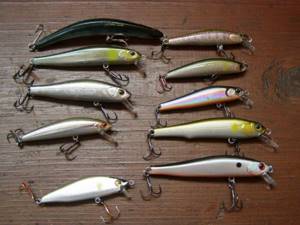
Cranky
All bladed wobblers can be divided into two groups: minnows - which have a passive low-frequency game, and cranks - which demonstrate active high-frequency behavioral movement with uniform wiring. The latter have a wide variety of options and forms. Among all those available for sale, veils and shads occupy a special place.
Shad have a shape reminiscent of a herring, convex at the top, elongated towards the tail, but flattened at the sides. Depending on the design and shape of the blade, they can be surface or deep-water, with a depth of up to 5-6 m.
The veils have a drop-shaped “pot-bellied” shape, are equipped with balls inside, show a pronounced play and the possibility of great depth up to 8 m.
Due to their behavioral characteristics, many classifiers classify fats and shads as cranks.
Representatives of this class are used mainly for trolling and do not require excessive effort from the fisherman, due to their independent active mobility in the water column. They have a wide range of buoyancy and demonstrate impressive results in catching predators in the summer.

Minnow Lures
If you look at this wobbler, it seems that it resembles a small fry. Due to this, the element is universal and allows you to lure almost any type of predator. Despite the fact that wiring is carried out in any horizon, it will differ depending on the bait that is used.
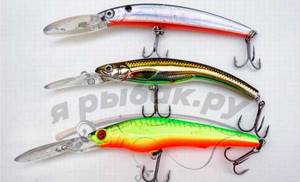
There are types of wobblers of the presented plan:
- Floating. With the help of such products it is good to catch predators in the shallows.
- Neutral. Such baits hang well in the water column, oscillating and attracting fish.
- Drowning. They are best used in the bottom layer. In this case, the wiring should be jerky, but active. Don't forget about pauses.
Rattlins
Rattlins are popular among fishermen. They belong to bladeless wobblers, but due to their structure, they are not superficial. The eyelet for attaching the fishing line is located on the back of the “fish”, and the entire nasal part of the diamond-shaped bait plays the role of a “scapula”, causing its significant depth and active behavior during uniform, wavy or stepped wiring. Among rattlins, deep-sea drowning ones prevail, including fast-sinking ones.
There are narrow and wide, noisy and quiet wobblers of this type. Thus, fishing in a body of water with a strong current requires the use of a rattlin with a narrow back, and fishing in still water requires the use of a rattlin with a wide back. In summer it is important to give preference to “rattles”, while in winter fishing you need to choose quiet rattles.
It is believed that, due to their active play, they are more attractive to perch and pike perch, but a hungry pike can also easily chase a noisy, fidgety “fish”.

Varieties of wobblers
Among the variety of wobblers is o, which has some of its own characteristics.
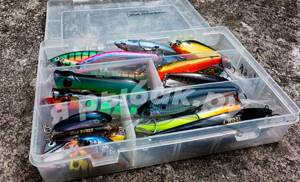
Different types of wobblers in a box
Various manufacturers advise you to pay attention to some types of similar baits:
- floating;
- drowning;
- suspenders.
Experienced fishermen note that in cases where near-bottom fishing is expected, it is advisable to take a closer look at those models that have large blades.
Due to the vertical trajectory of the dive, the bait quickly reaches the desired dive level.
Experts note that such elements are good if fishermen are going to fish on a lake whose depth does not exceed four meters. Otherwise, the part will not be able to perform the task that was not assigned to it.
If the river chosen is calm and shallow (no more than two meters deep), then you can pay attention to the Jackall Soul Shad , which is made in different variations and has a rich color scheme. The use of this wobbler is good when a large ide is expected to be caught.
Jerkbaits
Highly specialized wobblers are jerkbaits. These are large and especially large baits, aimed primarily at catching pike. They are also bladeless, however, like rattlins, they are not superficial. Among the “fish” of this species there are both floating and sinking ones, but the main number are “suspended”.
The eyelet for the fishing line is located on the spout or at the top of the head. There is no own game; you need to fish with jerkbaits using a jerk retrieve, which requires the fisherman to have a well-developed technique. Wobblers are most often used in combination with a special rod of short length and increased power, with a thick cord and a corresponding reel.
This species allows you to catch medium and large pike, including in reservoirs with standing water or weak currents.
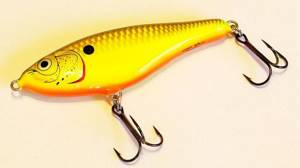
Walkers and poppers
In cases where the predator walks near the surface, as well as for wetlands and shallow reservoirs with abundant vegetation, it is effective to use specimens of the popper or walker type.
Walker is a purely surface bait, having an elongated shape, widened towards the nose and narrowed towards the tail. Has mainly rear loading. During jerking, the thread creates a wave-like stroke with a wide swing from side to side, which is compared to walking a dog.
Popper visually represents a fish with an open mouth. Professional jerking determines the specificity of its movements in the water, which destabilize the water surface ahead and create corresponding gurgling sounds. From the beginning of summer until late autumn, these features make it possible to catch active pike, perch, asp, and chub. The behavior and degree of immersion is influenced by the type of loading: front - for absolutely surface fishing; the back one is for long casts and small dives (25-40 cm), the middle one is for neutral conditions of “popper” fishing.
Poppers and walkers represent a group of topwaters, which also include gliders, crawlers and chuggers.
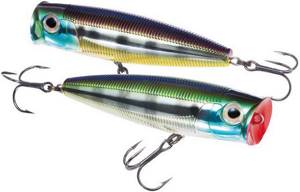
Oscillation frequency
Depending on the specialization (object of fishing) of the wobbler, they may have different oscillation frequencies. This characteristic is created jointly by the body shape and the blade of the bait. The wobbler can be high-frequency, mid-frequency, low-frequency, or have no frequency play at all.
High-frequency ones are most often used when fishing for perch and chub, and low-frequency ones, with a wide sweeping amplitude of movement, are very popular with pike.
Some baits do not have their own active game and you may mistakenly think that you bought a defective product.
Don't rush to take it back to the store. For these wobblers, jerk wiring is used - twitching, if it is MINOW or some other techniques (jerking, jig). In principle, you can always find out in advance about the characteristics of a particular model from the seller or read on the Internet. Later you will be able to distinguish them by sight.
"Taste" priorities
There are no universal baits for any type of fish. As such, there is no classification of wobblers for pike, perch, and pike perch. However, each of them is characterized by certain trends in preferences.
- The wobbler is selected in proportion to the size of the desired “prey”.
- Pike can have different preferences depending on how full they are and the time of year. So, in the spring it is advisable to look for it at medium and large depths, in the summer - near the surface, in the autumn - at small and medium distances from the surface. Wobblers for pike are predominantly low-frequency with narrow or normal ranges of play. Minnows and jerkbaits are her “favorites.” However, walkers, ratlins and swimbaits also attract her well. It all depends on the conditions and the nature of the fish.
- Perch are not difficult to catch on specimens that exhibit high-frequency behavioral movement. Among them are mainly all types of crankbaits and topwaters weighing up to 5-10 g, as well as small minnows.
- Pike perch is a deep-sea fish. The bait is selected appropriately or one that is capable of luring a predator from the bottom in the water column at shallow and medium depths. Sinking models and “suspensions” among cranks and rattlins, less often – minnows, will be effective.
Each individual specimen is designed for certain fishing conditions, type of fishing and appropriate gear. Classification of wobblers helps to better navigate a wide range of baits and their markings. The choice is the individual preferences of the fisherman.
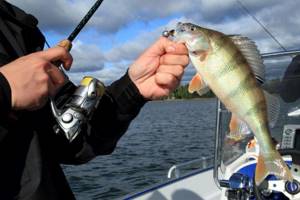
Studying the stocking of a reservoir, its characteristics, the nature of the fish, its location and preferences, the selection of wobblers and wiring is an integral part of any fishing. The indicative result of hard work can be a trophy catch, an interesting experience and a sense of satisfaction for a true fisherman.
Decoding the symbols on wobblers
Most often, manufacturers of wobblers have the same designation system for characteristics and includes model, size, weight, buoyancy, operating depth range and color code.
Let's give a specific example. The wobbler says 60F-SR. This means that it has a length of 60 mm, its buoyancy type is floating (F), with surface recess (SR).
Over time, new types of wobblers appear. In order for them to be 100% useful when fishing, you need to arm yourself with a wealth of knowledge in the field of their application. In this case, fishing will bring an excellent catch and a feeling of satisfaction.
Views: 596
Similar articles:
- Catching pike with a wobbler Pike is a voracious river predator, which can be fished all year round...
- Top wobblers for pike. The best wobblers for pike fishing 2019-2020 A wobbler is a solid bait for fishing with a spinning rod or...
- Catching pike with wobblers in spring. Top 10 best spring wobblers Spring is a great time for fishing, especially for such a toothy...
- Fishing for pike by twitching. Top 5 best wobblers for twitching Twitching is a relatively new and quite effective fishing technique for…
